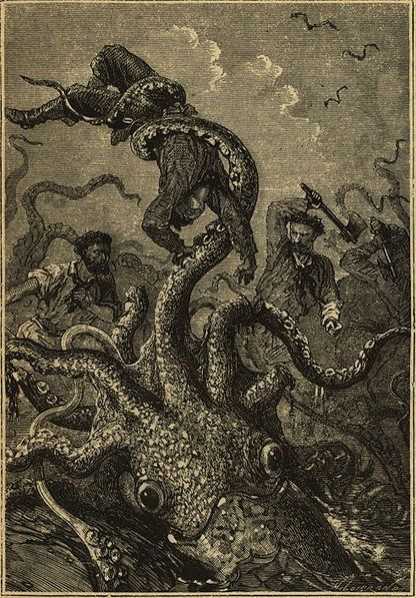Giant Squid Captured On Video For First Time; Japanese Scientists Found 'Kraken' 2,000 Feet Underwater

For the first time in human history a giant squid has been seen alive in its natural habitat, recorded on camera by a group of Japanese scientists working with a film crew from the Discovery Channel.
The researchers captured the footage of the giant squid, which can grow to be up to 60 feet in length, 2,067 feet underwater. In the past the animal has only been filmed on the surface or found dead after being washed ashore. They followed it down another 900 feet before the creature made its escape into the abyss, according to the Telegraph.
"The giant squid was so beautiful that it seemed to sparkle," Tsunemi Kubodera, one of the scientists, told reporters. "I was so thrilled when I saw it first hand, but I was confident we would because we rigorously researched the areas we might find it, based on past data."
Three scientists chased the beast in a single submarine, finally finding it in the North Pacific Ocean, nine miles east of Chichi Island, which is roughly 150 miles north of Iwo Jima. The squid in question was about 10 feet long and appeared to have lost its two longest arms, although Geeko System reported Kubodera did not know how that happened.
The crew had attempted 100 previous missions to find the squid and spent a toal of 400 hours in the cramped submarine.
The Discovery Channel will broadcast the video, which was recorded in high definition with the use of a specially designed camera, in the U.S. on Jan. 27 as part of its “Curiosity” series.
Legends of the giant squid, also known as the mythical Kraken, have existed since Viking ships began exploring the seas off the coasts off of Germany and Scandinavia. Sailors through the centuries have returned home to tell tales of a giant tentacle beast that swallowed ships and seemed invincible to swords or cannon fire.
While much of the sea-lore was almost certainly just legends, there has been evidence of the existence of a Kraken in the form of carcasses washing up on beaches and bite marks on other sea creatures.
Last summer fisherman Al McGlashan came upon the rotting corpse of a giant squid floating along the surface of the ocean off the coast of New Wales, South Australia. McGlashan, who had been fishing for tuna, pulled his boat up alongside just moments before a school of sharks descending on the squid’s meat, turning the rare find into a feeding frenzy.
© Copyright IBTimes 2025. All rights reserved.





















